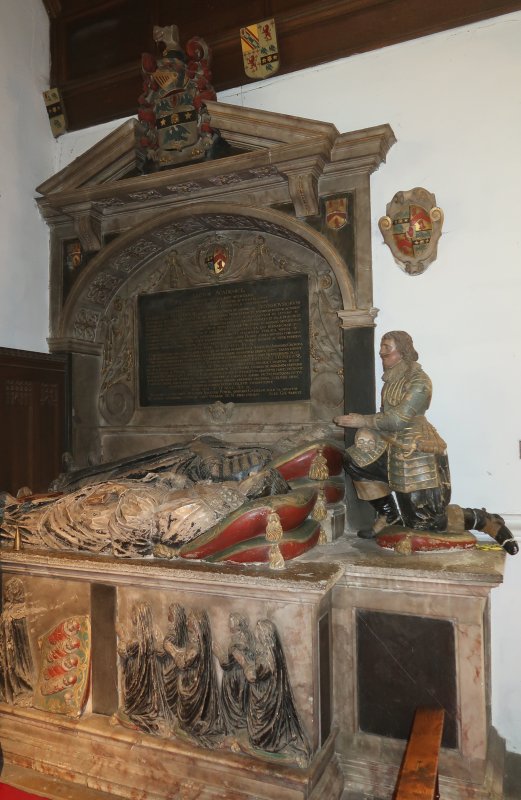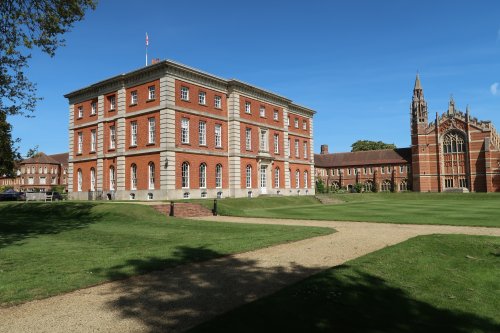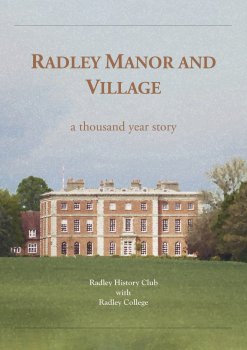The name Radley comes from two Old English words, read and leah. Leah means a clearing in a wood; read could mean either ‘red’ or – more likely – ‘reedy’. Excavations, notably at Barrow Hills, have revealed that there has been human use or occupation of the Radley area successively by Neolithic, Bronze Age, Iron Age, Roman, and Saxon people, since before 3000BC. Abingdon Abbey was founded in Saxon times and, by the time of the Domesday Book, Radley – along with Bayworth, Sunningwell, Kennington, North and South Hinksey, Dry Sandford, Shippon and the township of Abingdon – had become part of the manor of Barton, owned by the Abbey.
Radley Church stands on the site of an earlier Norman, or possibly Saxon, building, which is said to have burnt down in about 1280. The current church was consecrated in about 1290, and the nave and tower were added in the 15th century. The Church was originally a chapel of St Helen’s Church in Abingdon. Radley Vicarage dates from the 13th or 14th century. There is a story that it was used by the Abbey as a hunting lodge, but more likely it has always been the home of the incumbent of Radley Church, making it possibly the oldest building in the country to have been continually in such use.
It is possible that the main Radley settlement was originally near the Church, but from later medieval times until the early 20th century, the main settlement was in Lower Radley. Houses were built there by the husbandmen and yeomen who worked the land when it was still in open fields. Several of these houses still survive, the earliest dating to 1513 and 1522, both of cruck construction. Following enclosure of the fields, complete by about 1750, these family-based holdings were replaced by large farms worked by agricultural labourers. The old houses were split to provide homes for these labourers, before being more recently restored and enlarged.
Radley Manor and the other possessions of Abingdon Abbey were surrendered to the Crown on 9 February 1538 upon the dissolution of the monasteries and the manor was granted to Thomas, Lord Seymour of Sudeley. When he was executed for treason in 1549, Edward VI gave the manor to his sister Princess (later Queen) Elizabeth who sold it in 1560 to George Stonhouse, a Clerk of the Green Cloth (a court official in London). There is evidence of George being active locally but it was his son William, created a baronet in 1628, who really established the family in Radley. The magnificent marble and alabaster monument to Sir William and his family, sculpted by Nicholas Stone, can be seen in the chancel in Radley Church.

For most of the Civil War, the king was based in Oxford and Parliament held Abingdon. The Stonhouses were ardent Royalists and it is likely that Royalist soldiers were billeted in Radley Church. The parish registers record the burial of several officers and troopers in July 1643 and the panelled altar tomb in the churchyard is said to be of this date. It is widely believed that these deaths were the result of an attack by Parliamentarians and that this attack also led to the destruction of the Church’s north aisle and transept. However, research for the Club’s book, The Story of a Village Church: St James the Great, Radley, casts doubt on this and questions whether there ever was a north aisle and transept. Certainly, there was no fighting in the area in 1643 and the deaths that year were much more likely the result of disease.
In the 1720s the Stonhouse residence was replaced by the imposing Georgian building, Radley Hall – now known as ‘The Mansion’ of Radley College. In 1733 Ann Stonhouse was married in Radley Church to Sir William Bowyer Bt, of Denham Court in Buckinghamshire. In 1792 the Revd Sir James Stonhouse died unmarried and the Radley estate devolved to his niece, Penelope, Lady Rivers, and then to a nephew, Rear-Admiral George Bowyer of Denham. In 1794 he had lost a leg at the naval battle of Ushant, and in recognition of his bravery, he was made a Vice-Admiral and created 1st Baronet of Radley to go with his Denham baronetcy.

Sir George Bowyer died in 1800 and was succeeded by his son George, who ran into financial difficulties. In 1815 there was a sale of the contents of Radley Hall and Sir George took his family to live in Italy. He died in 1860 in Dresden in Germany, but his body was brought back to Radley and interred in the family vault in the churchyard in the dead of night.
Meanwhile, Radley Hall was let in 1819 to Benjamin Kent, who started a nonconformist school there; the school closed in 1844. In 1847 the Hall became the home of the College of St Peter, now Radley College. From small beginnings, both buildings and pupil numbers expanded considerably over the remainder of the century and into the 20th century.
- More about the history of Radley College
- From the Lodge to Lodge Hill: a guided walk through the grounds of Radley College on the public footpath
In 1860 the second Sir George Bowyer died and his eldest son the third Sir George inherited. He became a prominent Roman Catholic and founded St Edmund’s Church in Abingdon. His philanthropy resulted in large debts and, after he died in 1883, there was a sale in 1889 of most of the estate so that his creditors could be paid. The main purchaser was Mrs Josephine Dockar-Drysdale of Wick Hall. By prior arrangement, she sold the freehold of Radley Hall and Radley Park to Radley College.
Wick Hall had been built as Wick Farm in the 1720s or 1730s by the Tomkins family, who were maltsters and builders and were responsible for several fine houses in Abingdon. The property was bought by William Dockar in 1850; his daughter, Josephine Dockar-Drysdale, who had been widowed some years earlier, moved there after his death in 1882. She expanded the house considerably and renamed it Wick Hall.
From about 1600 Radley was in practice a separate parish in its own right with its own vicar, independent of St Helen’s Church, Abingdon (although the formal link remained until the 19th century). The vicar was appointed by the lord of the manor, who held the ‘advowson’ and acted as patron of the church. In the late 19th century, this right was purchased by Radley College, which initially appointed its own wardens (headmasters) to the role. There was a dispute with the Bishop of Oxford about the extent of this right, which was finally settled in 1893 when Charles Gore was instituted by him as vicar.
The village Church of England Primary School adjoins the churchyard. The school originated in the early 19th century, but the oldest surviving building is the ‘school room’ built in 1872 after the passing of the 1870 Education Act. The adjoining ‘School House’, where the headteacher lived until 1974, may have been built a little earlier though its precise age is uncertain; it is now a private dwelling.
The mainline of the Great Western Railway was built through Radley in 1844. A branch line to Abingdon was opened in 1856 from a junction near Black Bridge. Wooden platforms were built for passengers, with a simple timber shed for protection but there was no access by road. In 1873 the branch line was extended to Radley village and a new station built there. The Abingdon branch line was closed to passenger traffic on 8 September 1963 and Radley station buildings were demolished soon afterwards. The station is now unmanned, but its use has grown very fast and it is now flourishing, with some resulting problems in parking.
The Bowyer Arms public house alongside the railway was probably built in the mid-1850s and formed part of the Bowyer estate until Morland, the Abingdon brewers, bought the freehold in 1889. The pub is now owned by Greene King.
At the end of the 19th century there were at least 11 farms in Radley, some of them quite large. These have been merged and today there are only two – Peach Croft and Lower Farm. However, most of the land remains in agricultural use and many of the farmhouses and barns of the earlier farms, some very fine, remain.
A large area of Lower Radley has been given over for gravel extraction, with some of the pits being filled in with fly ash pumped underground from Didcot Power Station. The area is now being restored for nature conservation and quiet recreation.
In the 1801 Census there were 298 people living in Radley, in 34 different houses, with 63 heads of families. This was probably little more than it had been 200 years before. By the 1901 Census, the population had grown to 592. This excluded the masters and pupils of Radley College, and ten years later the figure, including the College, was 927. The 1981 Census recorded 3,562 persons, which was reduced to 2,290 in the 1991 Census largely due to alterations to the Abingdon boundary to take in new housing estates at Peachcroft. The population was recorded at 2,835 in the 2011 Census.

Radley Manor and Village: a thousand year story, published by Radley History Club in November 2019, tells the history of Radley’s manor and its relationship with the village. The manor’s history is traced from around the time of the Norman Conquest, when it was held by Abingdon Abbey, through the Stonhouse, Bowyer and Dockar-Drysdale families to the present day occupiers, Radley College.